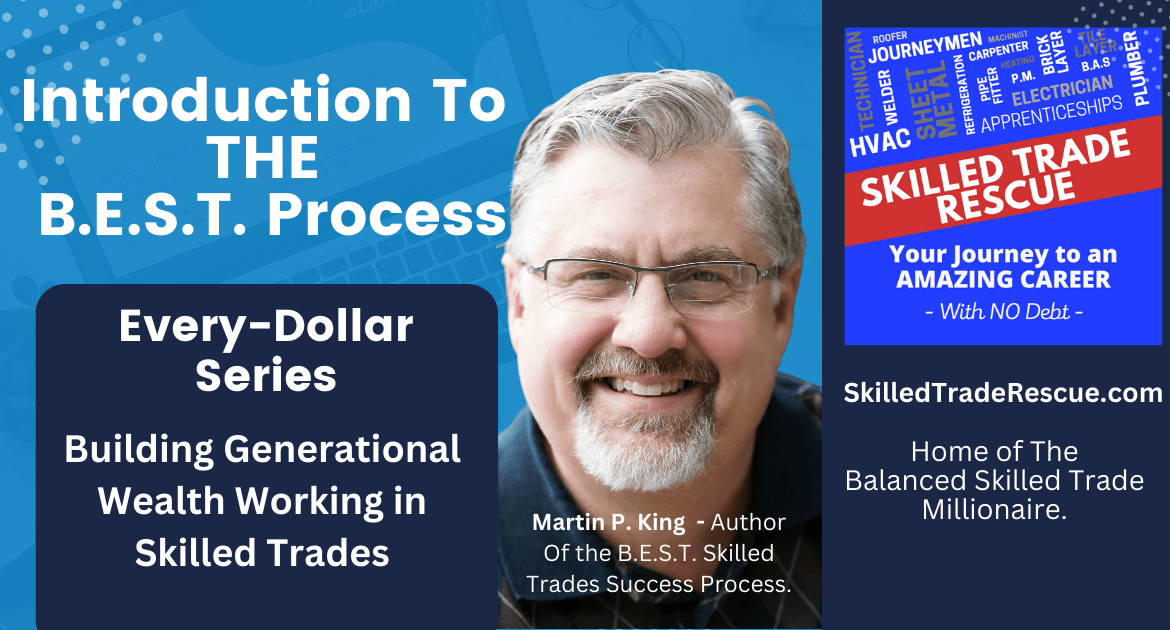For first-time investors who work in skilled trades, navigating the investment world can be a daunting experience. However, investing in the right opportunities can significantly grow your wealth and ensure financial stability for years to come. With so many investment options available, it’s essential to know the most lucrative and reliable ways to invest your money.
Here are some smart investment strategies for first-time investors working in skilled trades.
1. Build an Emergency Fund
The first step towards a successful investment strategy is building an emergency fund. As a skilled tradesperson, you may experience periods of unemployment or be forced to take time off from work due to illness or injury. Without an emergency fund, unexpected expenses can cause significant financial strain.
In Canada, the average cost of a car repair or unexpected home expense is around $2,500. By having an emergency fund to cover those expenses, you can avoid taking on debt or tapping into your investment funds.
Aim to save at least six months’ worth of living expenses in your emergency fund. This fund should be easily accessible in case of an emergency.
2. Invest in RRSPs and TFSAs
Registered Retirement Savings Plans (RRSPs) and Tax-Free Savings Accounts (TFSAs) are two of the most popular investment options available in Canada. They are both registered accounts that offer unique tax advantages and can help grow your wealth at a faster rate.
An RRSP is a long-term investment account that allows you to defer taxes on contributions until retirement. Contributions are tax-deductible, and your investment grows tax-free until you withdraw it after retirement. When you withdraw, the income is taxed at your marginal tax rate, which is likely to be lower than your current tax rate.
TFSAs, on the other hand, are flexible short and long-term investment accounts. Contributions are made with after-tax dollars, and your investment grows tax-free, even when you withdraw it. TFSAs are ideal for short-term savings goals, such as a down payment on a house, or long-term retirement savings.
Contributing to both RRSPs and TFSAs is a smart way to maximize your tax benefits and create wealth over the long term.
3. Don’t Put All Your Eggs in One Basket.
Diversification is the key to managing risk in your investment portfolio. You should avoid investing all your money in a single investment, such as a stock or real estate, because if that investment performs poorly or falls in value, you stand to lose all your money.
Instead, you should diversify your portfolio across multiple asset classes, including stocks, bonds, mutual funds, ETFs, and real estate investment trusts (REITs). By spreading your money across different investments, you can reduce your risk and ensure that if one investment does poorly, you still have other assets that are performing well.
4. Take Advantage of Employer-Sponsored Retirement Plans
If you work for an employer who offers a group retirement plan, such as a pension or group RRSP, take advantage of the opportunity. Your employer may offer to match your contributions, which means they will contribute money to your retirement account based on the amount you contribute.
This is essentially free money, and you should aim to contribute enough to receive the maximum employer match. For example, if your employer offers a 50% match on your contributions, you should contribute enough to receive the full 50% match.
5. Consider a Robo-Advisor
Investing can be time-consuming and complicated, which is why many first-time investors opt for a robo-advisor. A robo-advisor is a digital platform that offers investment advice and management services through the use of algorithms.
Robo-advisors use your personal financial goals and risk tolerance to create a customized investment portfolio designed to maximize your returns and minimize your risk. They take care of rebalancing your portfolio and adjusting your investments as needed, freeing up your time for other activities.
Robo-advisors often have lower fees than traditional investment advisors, making them a cost-effective way to invest your money.
Bottom Line
In conclusion, as a first-time investor working in skilled trades, you have several smart investment options to choose from. Building an emergency fund, investing in RRSPs and TFSAs, diversifying your portfolio, taking advantage of employer-sponsored retirement plans, and considering a robo-advisor are all excellent ways to grow your wealth and secure your financial future. By following these investment strategies and working with a financial advisor, you can maximize your investment returns and build a secure financial future.


> For one on one or group assistance with personal finance, STR recommends that you check out the following resources:
> Inaccuracies with Bureau of Labor Statistics (BLS) data: Many of our blog posts will quote BLS data. SkilledTradeRescue.com has been able to identify that data quoted specifically for Skilled Trades can be as much as 50% LOW in many USA labor markets. For more information on these inaccuracies please visit the STR national labor survey page at the link below. On this page there is a video containing the latest information at the top of the page as well as other information. If you currently work in skilled trades, PLEASE consider participating in our national labor survey.





